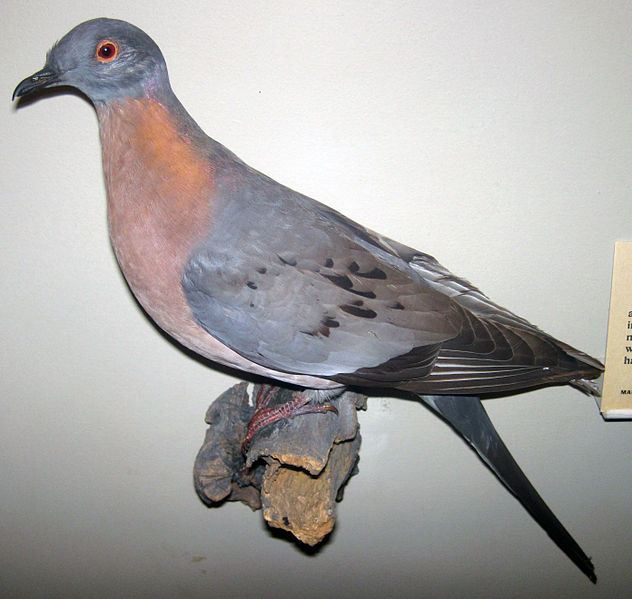Fil:Ectopistes migratorius (passenger pigeon).jpg

Størrelse på denne forhåndsvisningen: 632 × 599 piksler. Andre oppløsninger: 253 × 240 piksler | 506 × 480 piksler | 810 × 768 piksler | 1 080 × 1 024 piksler | 2 160 × 2 048 piksler | 2 784 × 2 640 piksler.
Opprinnelig fil (2 784 × 2 640 piksler, filstørrelse: 1,73 MB, MIME-type: image/jpeg)
Filhistorikk
Klikk på et tidspunkt for å vise filen slik den var på det tidspunktet.
| Dato/klokkeslett | Miniatyrbilde | Dimensjoner | Bruker | Kommentar | |
|---|---|---|---|---|---|
| nåværende | 2. apr. 2015 kl. 18:39 |  | 2 784 × 2 640 (1,73 MB) | FunkMonk | Transferred from Flickr via Flickr2Commons |
Filbruk
Den følgende siden bruker denne filen:
Global filbruk
Følgende andre wikier bruker denne filen:
- Bruk i bn.wikibooks.org
- Bruk i en.wikipedia.org
- Holocene extinction
- Passenger pigeon
- User:Nutcracker100
- List of the prehistoric life of Alabama
- List of the prehistoric life of Florida
- List of the prehistoric life of Tennessee
- List of the prehistoric life of West Virginia
- List of the prehistoric life of North Carolina
- List of the Cenozoic life of Alabama
- List of the Cenozoic life of Wyoming
- List of the Cenozoic life of Virginia
- List of the Cenozoic life of North Carolina
- List of the Cenozoic life of Georgia (U.S. state)
- List of the Cenozoic life of Florida
- List of the Cenozoic life of California
- User:Catfurball
- User:Abyssal/Image captions to use
- Wikipedia:Userboxes/Birds
- User:Abyssal/Aspect ratio table
- User:Toohak113
- User:Diriector Doc/Ubx/Passenger Pigeon
- Wikipedia talk:WikiProject Userboxes/Ideas/Archive 15
- User:Lin Xuexi
- User:Diriector Doc/UbxGalaries/Nature
- User:Wikiselkie
- User:Geekgecko
- User:Missingnohk97
- User:Cedelmwood/Userboxes
- User:Mishmash Ideas
- User:좀비 브렌다
- User:Pinkelekoladele
- User:Asocos
- User:CryolophosaurusEllioti/Userboxes
- User:.samtxt.
- User:Pigginn
- User:Trashgoose
- User:WHEOOButEncyclopedia
- User:Davefrfr
- User:Mushroom133
- User:Locust Valley
- User:I.Do.In.Fact.Exist
- Bruk i en.wikibooks.org
- Bruk i es.wikipedia.org
- Bruk i fr.wikipedia.org
- Bruk i ka.wikipedia.org
- Bruk i la.wikipedia.org
- Bruk i pl.wikipedia.org
- Bruk i pt.wikipedia.org
Vis mer global bruk av denne filen.
